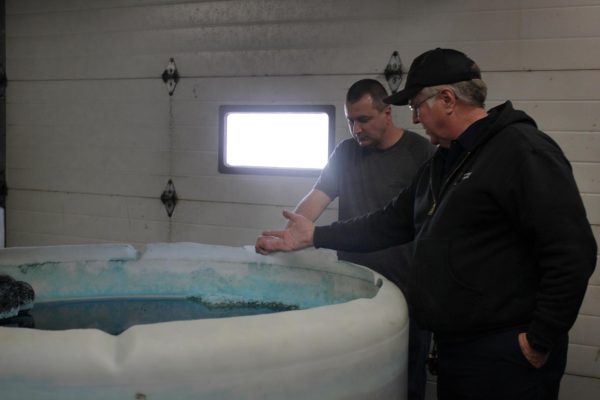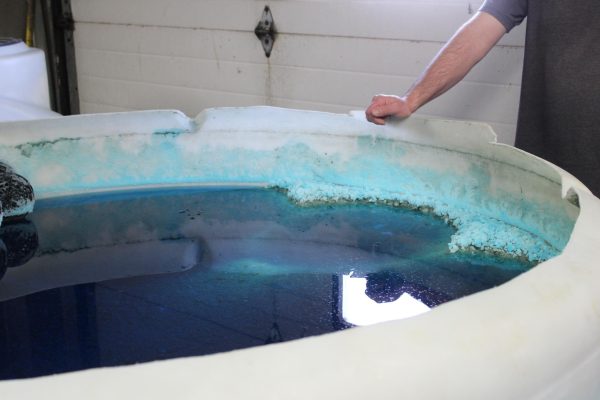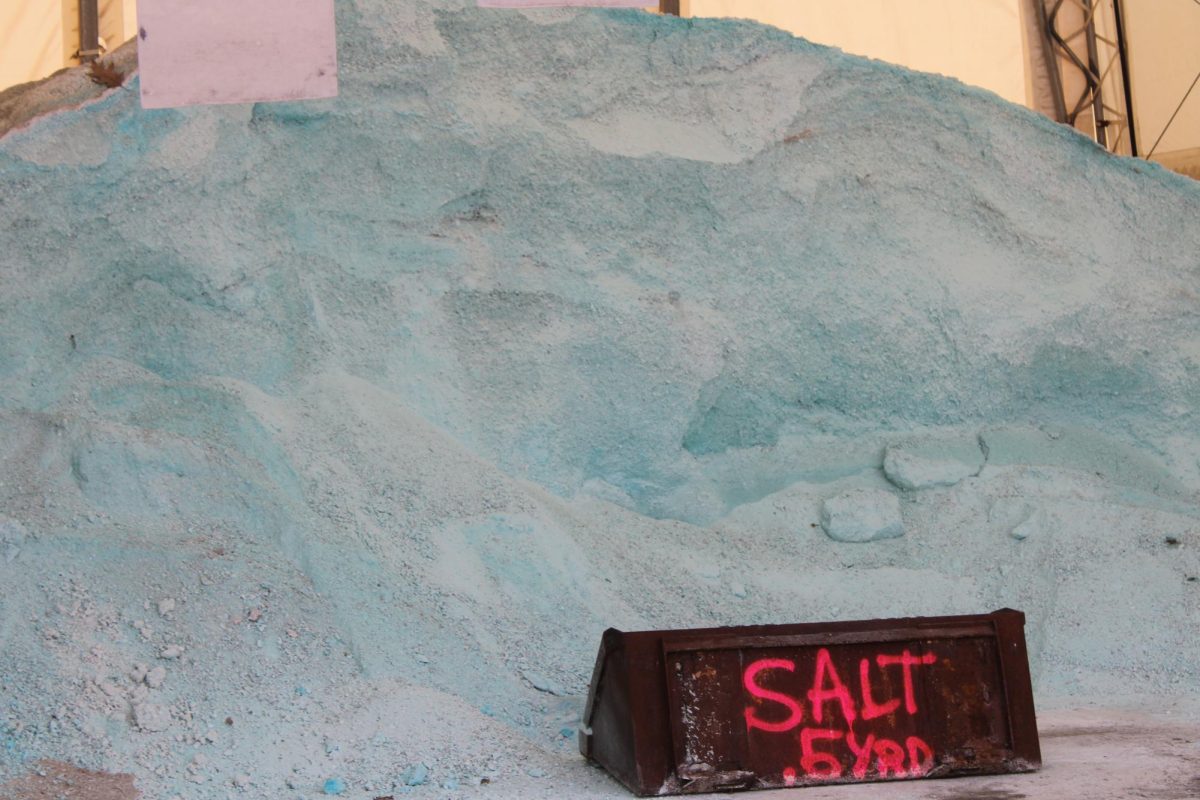Winter storms necessitate de-icing across major roadways, parking lots and college campus sidewalks. However, all of the salt used generates growing environmental consequences.
Winter salt contributes to the pollution of waterways and widespread ecological damage. A coalition of multiple governmental and non-profit organizations has designated Jan. 27-31 as Winter Salt Awareness Week.
As rock salt dissolves and is washed or plowed away, it follows runoff into waterways or groundwater. Excess sodium builds up in waterways or groundwater, making the body uninhabitable for most aquatic life.
“Salt decreases dissolved oxygen and kills fish that way,” explained Alex Kiesler, the co-treasurer for the environmentalist club GeoEnvi. “A lot of fish can’t survive in that habitat.”
Excess sodium kills plants and damages soil, reducing fertility. It stresses water filters, causes increased damage to infrastructure and can be mildly dangerous to humans. If consumed, increased sodium levels can cause long-term health complications such as increased risk for heart attack and stroke.
Because of these factors, the grounds department at UW-Whitewater has taken to the challenge over the last few years and refined their techniques to reduce salt pollution on campus. Their efforts have included awareness training to use more efficient techniques, the use of new equipment and the replacement of rock salt with salt brine.

The use of salt brine versus traditional rock salt comes with a number of benefits. Because of the uniformity of a brine mixture, salt crystals are evenly distributed across the application area, meaning less salt is needed to effectively melt said area.
The brine is not easily scraped off the pavement like rock salt and sticks to the ground, being reactivated if additional snow or moisture falls on the pavement.
It is more easily directed and can be precisely deployed, reducing both waste and scatter off the pavement. The brine used for spraying is only around 23% salt, the rest being water.
Between all of these benefits, the raw amount of salt being deposited on campus is cut to nearly a fifth of what was previously used. Not only do these changes reduce the amount of pollution, but also directly save money for the university.
According to the grounds department, a ton of salt costs between $60 and $80. Brine can be made for as little as 13 cents a gallon. To pretreat the entire campus once, it would cost about $175 in rock salt versus $78 in brine.
The difference in cost skyrockets when maintenance is taken into account. Salt corrodes concrete and metal over time. The controlled application of brine allows applicators to avoid sensitive spots, such as newly poured concrete or metal railings.
Infrastructure costs are hard to estimate but do add up over time when even a single set of stairs can have its lifetime extended by a year or two. Multiplying that across all the infrastructure on campus aggregates into heavy savings.

“We laid out some of the math [to] upper administration, showing the cost savings of this technology, which gave us a little bargaining power budget-wise,” said Joe Post, the building and grounds manager.
Along with John Hoffmann and Russell Schmidt, Post oversees the salt management on campus. Post had attended a program called Salt-Wise, which spreads awareness about salt pollution and better practices for reducing usage.
The initial implementation of brine on campus started with no budget.
“So, we kind of went in greed, drilled some holes in a PVC boom and tried it a few times, and from there it took off,” Post said.
Over the last few years, the department has upgraded its equipment but made sure to keep costs low by using effective solutions. Starting with trailers and PVC sprayers, the grounds department acquired pressurized sprayers and other equipment like automatic sensors that calibrate the amount of brine needed at any given moment in application.
Schmidt outlined the importance of starting small.
“You don’t have to be scared of this new technology, because we did it with no budget,” Schmidt said. “Start somewhere and build on it.”

Other campuses in the UW System, as well as multiple municipalities, have started switching to more sustainable methods of salting. Post, Hoffmann and Schmidt hope that by continuing education, the public and other administrators will look to improve their own systems and make a positive impact.
“There’s a lot of people in the conservation world who say ‘it’s not ours, just our turn,’” Schmidt said. “It’s just our turn. And I want to leave it so my children, my grandchildren, everybody can still have water to drink and fish and enjoy wildlife.”
One thing the grounds department wants to make clear is there is a surprising amount of variables that go into formulating a plan each freezing day. Ground temperatures, air temperatures and moisture levels all contribute to the melting point of ice.
However, sometimes it reaches a point where salt will take a while to activate. Complaints can cause knee-jerk reactions and lead to over-salting.
“Please have patience,” Hoffmann said. “And understand that sometimes it takes a little time.”



Joe Post • Jan 27, 2025 at 8:03 am
A bit more information about salt and the impacts.
Google- Salt wise Wisconsin